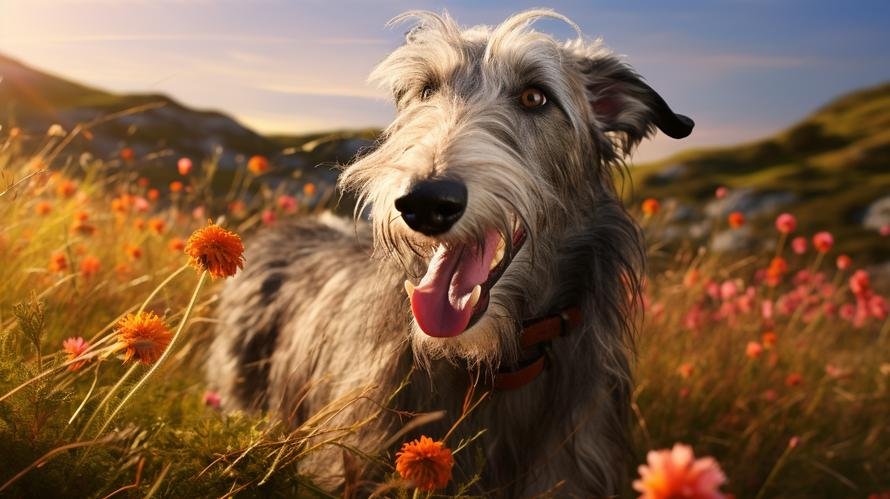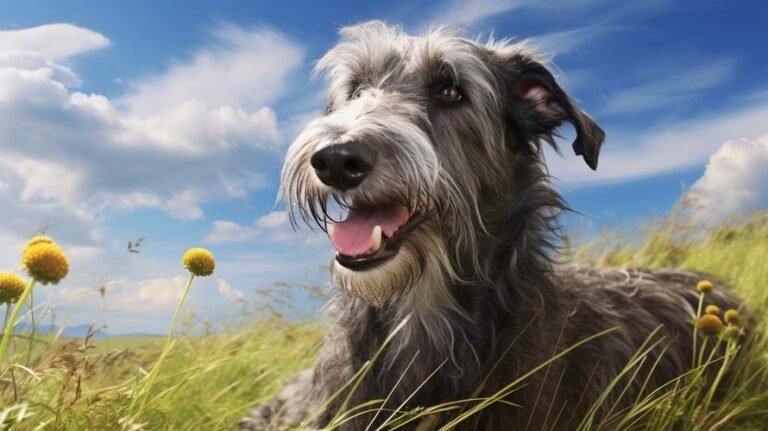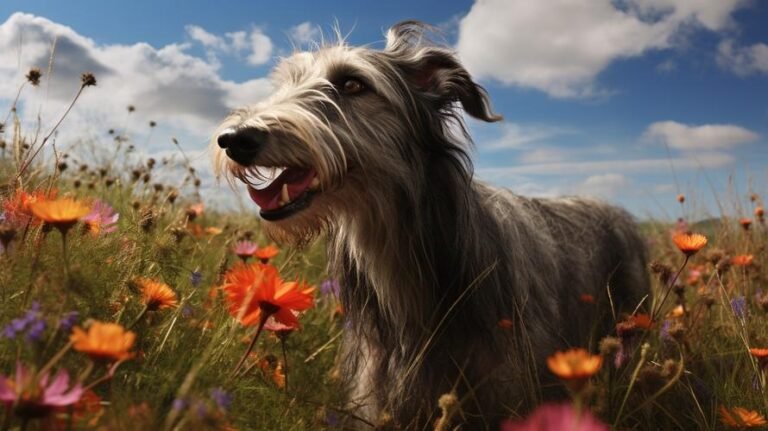Imagine a gentle giant with a heart as wide as the Scottish Highlands; a dog with a coat as rough as the craggy cliffs that adorn those same highlands, and a stride as graceful as that of a deer in flight. This is the Scottish Deerhound, an elegant and loyal breed, well-known for its gentle and placid demeanour.
Why is this magnificent breed not as popular as one might expect? Well, picture a dog taller than your dining table, a dog who requires as much space to run around as, well, a deer. That’s your Scottish Deerhound, an imposing creature, not for the faint-hearted!
For those who have been captivated by its greyhound-like physique and soulful gaze, it’s necessary to dive deeper. Is a Scottish Deerhound the right pet for you? This blog aims to answer this very question.
Scottish Deerhounds, also known as the “Royal Dog of Scotland,” have an impressive pedigree, dating back to the 16th century. These sighthounds were bred for their hunting prowess, primarily used by Scottish nobility in deer stalking. But it’s not only their history that’s impressive – these dogs are as tall as a small pony, standing at a towering 30 to 32 inches on average!
While their size can be imposing, Deerhounds aren’t quite as daunting as they initially seem. Nicknamed gentle giants, they are known for their good-natured temperament. However, prospective owners should not underestimate the considerable commitment required to maintain this breed.
Starting with exercise, Deerhounds are not your average couch potatoes. These dogs require substantial space to run and play off-leash. While they can live in an apartment setting, it’s crucial they get an active hour or two a day to stretch their long limbs.
Another point to consider is their diet. Given their size, Deerhounds need hefty meals. But not just any food will do. A diet packed with nutritious and healthy meals is needed to keep this large breed in optimal health.
Despite their substantial size, Deerhounds are relatively low maintenance when it comes to grooming. Their rough and wiry coat is resistant to dirt and doesn’t need more than a weekly brush to keep it in a good condition. But they are particularly susceptible to some genetic diseases, such as cardiomyopathy and cystinuria, so regular vet check-ups are crucial.
Sound like too much responsibility? Before you decide, let’s delve into the best part of owning a Deerhound – their charming personality. Deerhounds are calm, dignified, and exceptionally loving companions. Suitable for families, they get along well with children and other pets. Despite their aristocratic aura, they are keen to please and are known for their unwavering loyalty. They boast brains to match their size too and can be surprisingly easy to train, given their docile nature.
Furthermore, they’re not as loud as their size might suggest. Deerhounds are, in fact, pretty quiet dogs, only barking when necessary. This breeds’ friendly and outgoing nature makes them poor guard dogs but fantastic buddies if you’re looking for a gentle and peaceable pet.
Of course, bringing a pet into your family is a lifelong commitment. Before you decide on a Scottish Deerhound, there are questions you need to consider. Do you have enough space in your home, and perhaps even more important, in your heart for such a large dog? Are you capable of meeting its dietary and exercise needs? Can you commit to regular vet check-ups?
In conclusion, Scottish Deerhounds undoubtedly make excellent pets with their combination of gentle temperament, loving nature, and impressive intelligence. But it is essential to evaluate your circumstances and determine if you can provide an environment conducive to their unique needs.
If you feel that you can do justice to their heritage and cater to their needs, taking on a Scottish Deerhound can be a rewarding adventure, providing you with a loyal, loving companion whose charm is indeed as endearing as the illustrious Scottish Highlands they come from.



